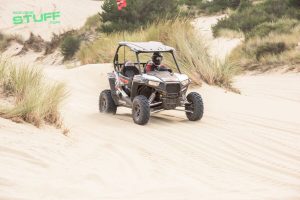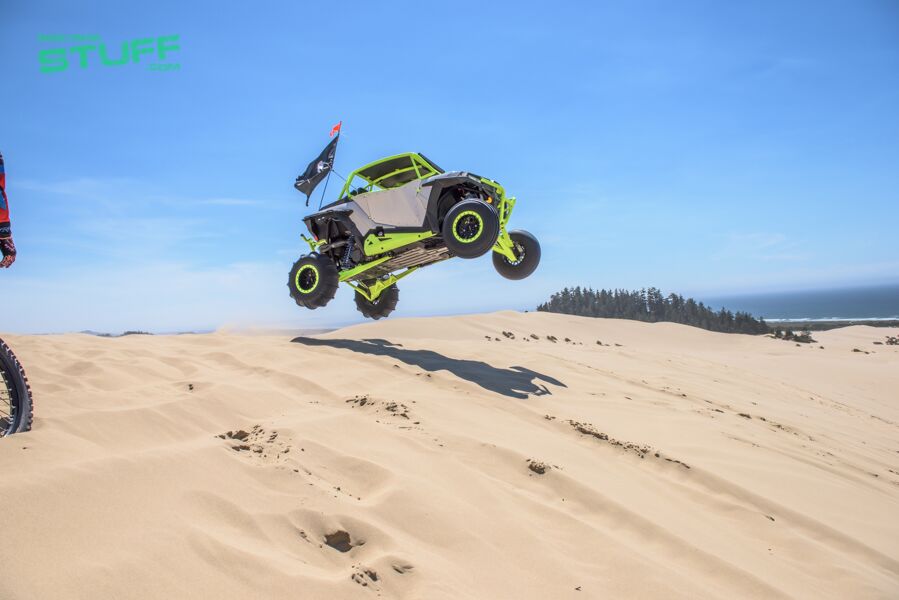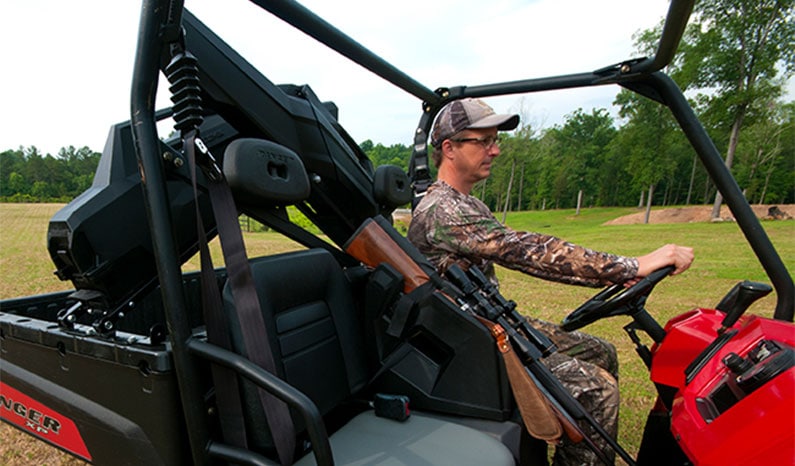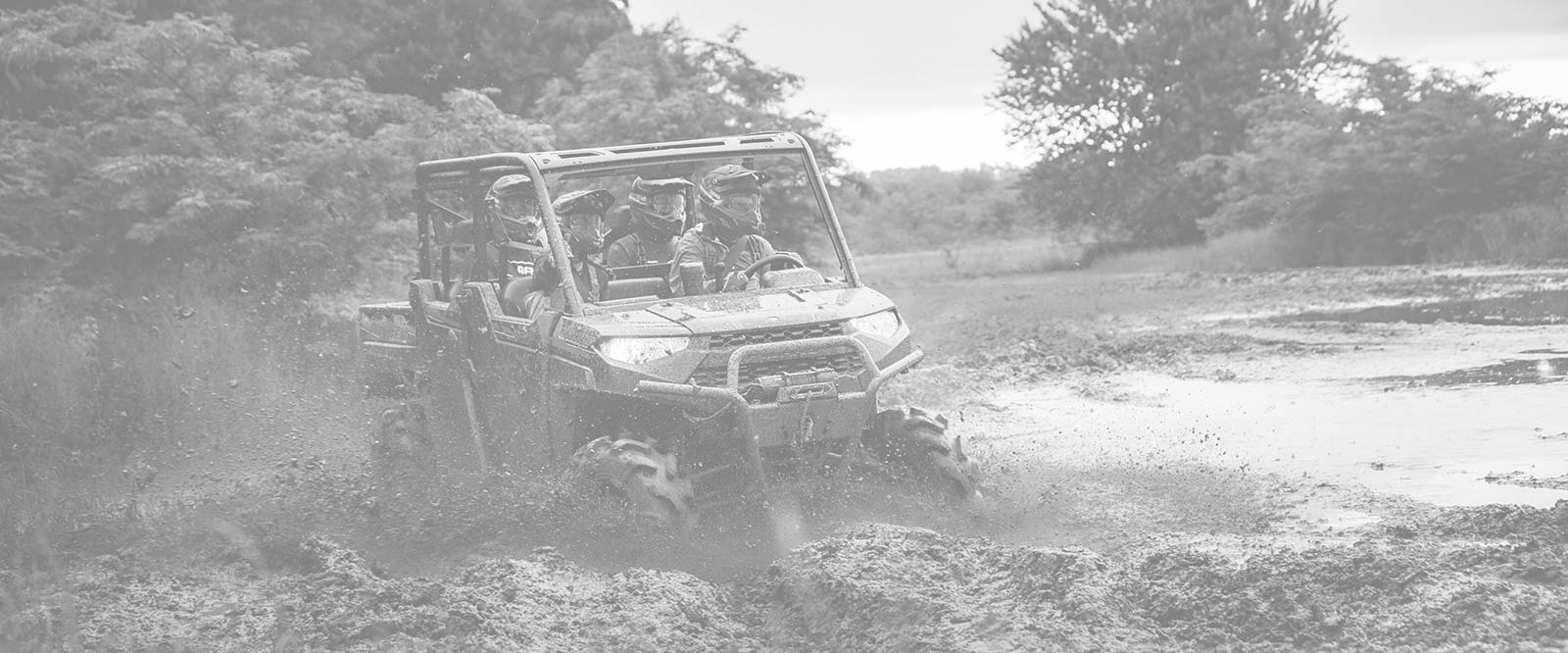The sand dunes can be an exhilarating riding scene for rider and passenger alike, the high peaks and low valleys of this ever changing landscape rival even the most extreme rollercoasters. Although sand slinging can be a breathtaking experience there are also some hazards that can arise, but with proper preparation and a little guidance your next trip to the sand dunes can be a rewarding adventure.
PREPPING
Whatever SxS you own, properly preparing your bike is important. Check your air filter. Sand is incredibly destructive; you want to avoid your motor from ingesting any of it. Before you go, service your air filter; you could also bring some pre-oiled spare filters in zip lock baggies to swap or service your filter with each day of riding.

TIRE PRESSURE
Momentum is key! Conserve your momentum, getting traction can be difficult, making it tough to increase your speed so do your best not to lose momentum because it may be hard to gain it again. One way to help get traction is to increase the size of your footprint. You can do that by lowering the pressure of the tires, providing better floatation. This will also minimize wear and tear and help reduce strain on your rig. The optimum tire pressure can vary depending on the terrain and what side by side you drive. Here is a little trick to help you figure out where you need to be.
On a flat surface, park your loaded rig and place a brick 1 cm away from the side wall of your rear tire. Then deflate that tire until it touches the brick, once touching the brick, measure the tire pressure. Whatever the psi, use it as your starting point. You can alter the pressure for the terrain once becoming more familiar with driving on the sand. If that method is too much for you, a standard base pressure to use is 15 psi; just remember not to forget to have a working gauge and air to inflate your tires back up when the ride is over.

The right pressure is the sweet spot between traction vs. risk of damaging your tire. It can make the difference between getting stuck and getting around well. Lowering the pressure increases the risks, tires become more vulnerable at low tire pressure and it’s possible to damage the side wall or roll the tire off the rim. In that case, beadlock rims, like the STI HDs or Sedona Racing’s Mambas, can come in handy. When off the sand, if you lowered your tire pressure, remember to drive slowly; hard surfaces and rocky terrain can tear up your tires and rims; minimizing speed will help avoid damage as much as possible.
DRIVING TIPS
Follow the guy in front of you! The guy in front of you has packed the sand down so his tracks are a firmer surface. Avoid rapid acceleration and quick braking which could cause a mound in front of all your wheels; this may keep you from taking off. You should coast to stop if possible and park facing downhill to help with takeoff. Rapid acceleration could actually slow you down, instead of moving forward you will dig your wheels into a hole. Taking off should be done as smooth as you can, if you have a manual transmission, like the Yamaha YXZ 1000 R, keep gear changes at hi revs. Using low gear is advised to keep your engine torque up because driving on sand requires plenty of engine power.

Make your turns as wide as possible, on the sand your front wheels act like a rudder, if you turn too sharp it would be similar to applying the brakes. Only go straight up and straight down when hitting the steep sand dunes, driving at an angle will transfer your weight to the downhill side wheels causing them to dig in, making your angle worse and risking a roll over. If your back end starts to slip sideways as you’re going down a steep dune, slightly accelerate to straighten yourself out, never use the brake. Never make a U-turn, if you’re going up but you don’t make it, reverse down; stay in gear and do not coast. Furthermore, some dunes will have gullies and soft sand at the base so try to avoid stopping in these spots.

GETTING UNSTUCK
It’s tempting to floor the gas when you get stuck, don’t dig yourself into the sand; this will only make it harder to get out. Ease yourself in reverse and try to use your compacted tracks to back up, once free you can give going forward another shot. If you can’t reverse yourself out, you can rely on a friend or fellow rider to help by giving you a push, pull you with a snatch strap or winch you out. If you are by yourself there is another way, you can lower your tire pressure even further, in extreme cases you can bring it down to 6 psi but avoid going this low unless necessary. Jacking is another option if you have one and don’t forget to do a little digging to remove sand buildup behind the tires.

WHAT ELSE?
Although it’s not a necessity, paddle tires, like the EFX Sandslingers or GMZ Sand Strippers, are going to help you get around tremendously. You will notice the difference; the big lugs on your back tires will help you conquer the sand. What is a necessity? Goggles! Protecting your eyes is key; you can’t drive if you can’t see. It’s recommended to roll with other riders. The dunes can be a dangerous place and if you’re planning on getting a little air you need a spotter to make sure there isn’t anyone or anything on the other side of a sand dune. A tall flag or whip is recommended and in most cases required. This will help you be seen by other riders and reduce the chance of an impact with someone else. Radios are always handy, being able to communicate with other drivers is a huge advantage to safety and directions; you can easily get turned around in the vast dunes.
Remember sand can do a lot of damage to your rig in a short period of time, make sure you’re prepped and give it a good hosing off when you’re done, especially if you’re riding along the beach; salt is hard on your vehicle too. So keep on the throttle and your front end light and most importantly have fun!





Comment section